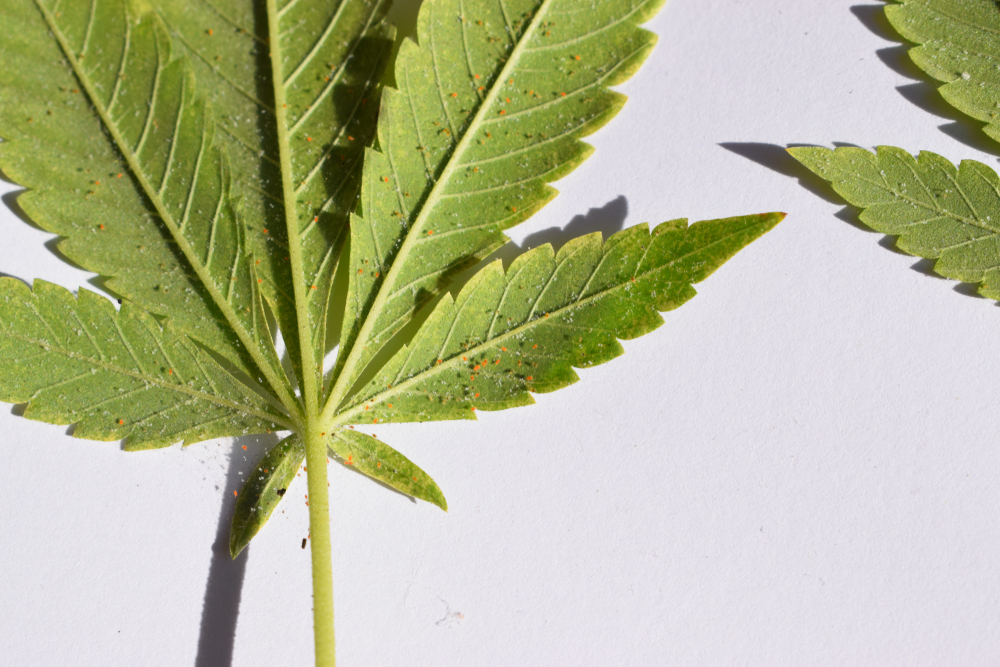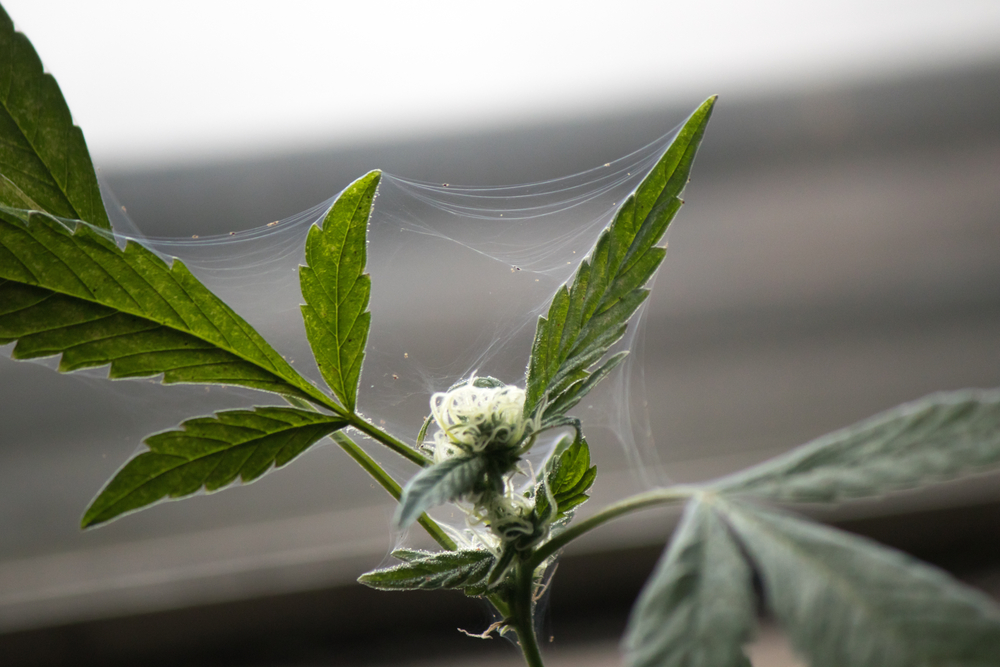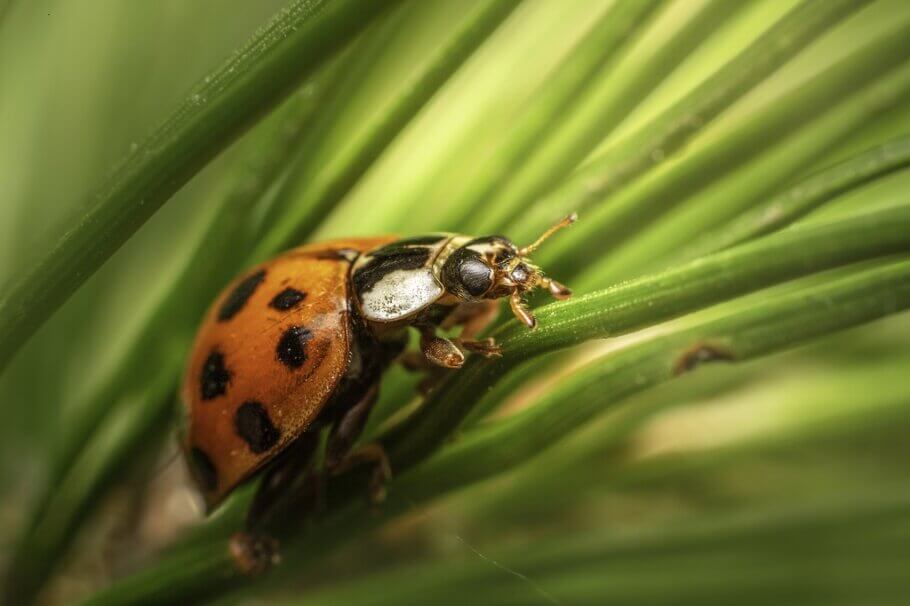Red Spider Mites
List of contents
Without a doubt, in the world of cannabis cultivation, the red spider (Tetranychus urticae) is one of the most feared and problematic insects, especially if we talk about indoor cultivation. This tiny arachnid can wreak havoc on cannabis plants, leaving significant damage in its wake that affects both the quality and quantity of the harvest, and can even ruin it if the pest is not controlled.
With its ability to multiply rapidly and its preference for warm, dry environments, spider mites represent a constant threat to growers. In this article, we will explore in detail everything you need to know about spider mites, from their life cycle to their control and prevention methods, so you can protect your plants and ensure a healthy and prosperous harvest.

Red spider (Tetranychus urticae)
This pest is recognized by its red or yellow color, although its size is generally less than 1 millimeter. Spider mites, which you will find on the underside of leaves, feed by sucking the contents of leaf cells, resulting in small yellow spots of discoloration on the surface of the leaflets. Furthermore, if the pest continues its course, it produces fine cobwebs on the leaves and buds, which contributes to their recognition. These mites reproduce rapidly in hot, dry conditions, which can lead to a massive infestation in a short time.
This pest is difficult to detect with the naked eye due to the tiny size of the spiders, but its presence is evident by the damage it causes to plants. Keep an eye on the leaves and if you see small yellow dots on their surface, you will probably also find these small mites on the underside of the leaves.
How to detect the red spider infestation?
The first symptoms that appear are white or yellow dots like pinpoints, which accumulate along the main veins of the leaves and can even end up discoloring the leaf to a light grayish-green color. This will be the first stage of the plague. In the second stage, the leaves will completely discolor and may fall, and we will be able to perfectly perceive the very fine cobwebs on the underside of the leaves and even on the flowers. The last phase of colonization is in which the plants are completely covered by cobwebs and the death of the plant is complete.
Plant Quarantine: Isolation is prevention!
Today, and mainly caused by the increase in clone and plant trading, plant isolation is essential in order to keep your garden free from pests and diseases. Today we tell you how to schedule a quarantine program for your new plants, also for any infected plant that might need special care.
How, when, and why do spider mites attack marijuana plants?
Red spider mites Outdoors
Outdoors, spider mites usually attack mostly at marijuana plants which suffer periods - of shorter or longer length - of drought, and which are also subject to high temperatures and very low humidity; the ideal conditions for the development of spider mites are high temperatures and dry environments. That is why we're faced with this problem especially during the months of July and August, when the best conditions for the spread of this pest are naturally given. If we add to these atmospheric conditions a plant grown in a small pot and with little or irregular irrigation, we have the perfect cocktail for the propagation of spider mites.
Although the spider mites pest can significantly decimate the harvest, it will rarely end with the entire crop, since plants attacked by red spider mites - unless they are covered by spider webs - will still be suitable for consumption.

Red spider mites Indoors
Indoors, red spider mites are one of the most common pests, with an alarming destruction capacity of the crop, because indoor crops, under artificial lights, are usually under the combination of high temperatures and low humidity.
In this growing system is where the plague can completely destroy the harvest, since - being an indoor growing - there aren't the predators that would be found in natural ecosystems.
As happens outdoors, July and August are the months when plants are especially prone to the expansion of the spider mites pest, when the high temperatures of the summer join with the heat produced by the growing lamp, which raises the temperature to 33 / 34ºC or higher.
Control and prevention of red spider mites on cannabis crops
To prevent their presence, the best method is to regularly wet the foliage of the plants by spraying them with water with a hose, by aspersion, or in the case of indoor plants, with a hand sprayer or the installation of ultrasonic humidifiers; placing some containers full of water to increase humidity may also give some result. It's also necessary to be careful when using fertilizers rich in Nitrogen (N), which favors this pest since plants grow much more and have lots of very tender tissues, ideal for being bitten by this parasite.
[productes tipus="fitxa" cerca="insecticidas"]
Organic remedies
We can find on the market different products that can help us fight against spider mites once the plague has spread, but we will achieve the best results using these products as prevention, that is the only way to keep our crops free of spider mites. For example:
- Neem Oil Extract (Trabe's Neemazal, BioNeem)
- Natural Piretrines (Flower's Double Max Acaricide)
- Nettle Slurry with potassic soap (Urtifer from Trabe)
Besides these commercial products there are also homemade remedies to combat this plague, for example:
- Onion skins placed on the soil of the crops act as repellent
- Infusion of ferns diluted in water to apply at the beginning of spring
- Infusions of wormwood mixed with soda silicate, sprayed in spring and autumn
Another way to control this pest is manually. It consists in cleaning the underside of the leaves with a cotton ball dampened with pharmacy alcohol diluted with water at 50%. Notice that if we decide to use this system, we will have to repeat the operation every week until the end of the crop.
Natural Predators
We can find on the market different types of predator insects against spider mites:
- Amblyseius californicus: Mite predator of red spider mites
- Feltiella acarisuga: Gall-Midges predator of red spider mites
- Macrolophus caliginosus: Bed bug nymphs predator against red spider
- Phytoseiulus persimilis: Mite predator of red spider mites

Chemical Control
Unfortunately, when the plague has escaped from our control and seriously threatens the development of our crop, we have no other choice than to combat it with chemicals. In this case, we must look for an acaricide that has low danger for the fauna and a short safety term.
So far our introduction to the detection, control, and eradication of the red spider mite, which is undoubtedly one of the most feared, common, and harmful pests in many cannabis crops. Do not hesitate to leave us here your doubts, comments, or tricks to combat them.
Happy harvest!






































































